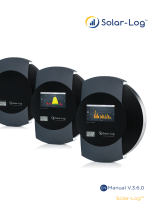Page is loading ...

REFRIGERATION AND
AIR CONDITIONING
In 2000, Unilever issued a policy to introduce environmentally
friendly HFC-free refrigerants where commercially viable and legally
allowed. During the Olympic Games in Sydney, Australia 2000, ice
cream cabinets using hydrocarbon (HC) refrigerants were tested.
These have been subsequently rolled out in large numbers in Europe.
An extension of the project has been to investigate whether solar
panels could be used to reduce energy consumption. This project
was run jointly with Danfoss, who developed a compressor using
HC refrigerant, that was capable of running on DC power supply
with a low power requirement on start up and running so that it
could be used with solar panels and a battery.
These compressors were tted in an Ice Cream Cabinet where part
of the energy supply comes from a 80 W solar panel, and the
remaining part is coming from a 130 Ah solar deep cycle mainte-
nance free battery. Initial tests suggest that it is capable of main-
taining the temperature inside the cabinet even at +50°C ambient
temperatures.
During the Athens Olympic Games, four of these Ice Cream cabinets
will be located at strategic places in the centre of Athens.
A detailed energy supply diagram can been seen on page 2, Fig. 1.
During the night the cabinets are moved to a place with mains
supply to charge the batteries.
The size of the solar panel has been chosen so that the contribution
from the PV panel is approx. 30% of the total energy consumption
of the cabinet. See page 2, Fig. 3
Fig. 2 shows the energy ow in the cabinet over 24 hours. As it can
be seen from the gure there is a surplus of energy from the solar
panel during day. The surplus of energy is charged into the battery.
Unilever Solar assisted Ice Cream Cabinet
with Danfoss direct current operated propane compressor

DEHC.PA.100.G1.02 / 520N0010
Produced by Danfoss G1Communication 04.06.UF.JN
Danfoss Compressors GmbH
Mads-Clausen-Strasse 7
P.O.Box 1443, D-24939 Flensburg
Phone: +49 461 4941-0
Telefax: +49 461 44715
www.danfoss.com/compressors
Fig. 1 – Energy supply diagram
Fig. 3 – Solar contribution per 24 hoursFig. 2 – Energy Flow
Solar Panel
Voltage regulator
Battery
Display RL1
Controllers
DC compressors
AC/DC converter
Battery charger
100-250 V AC
50/60 Hz
L
N
Cooling demand
Energy from
mains
Energy
from
mains
Energy from
Solar panel
Energy into
battery
Energy from battery
Energy from battery
/

